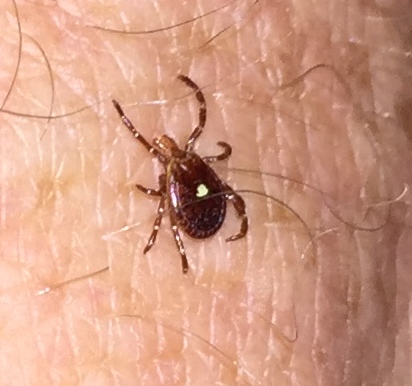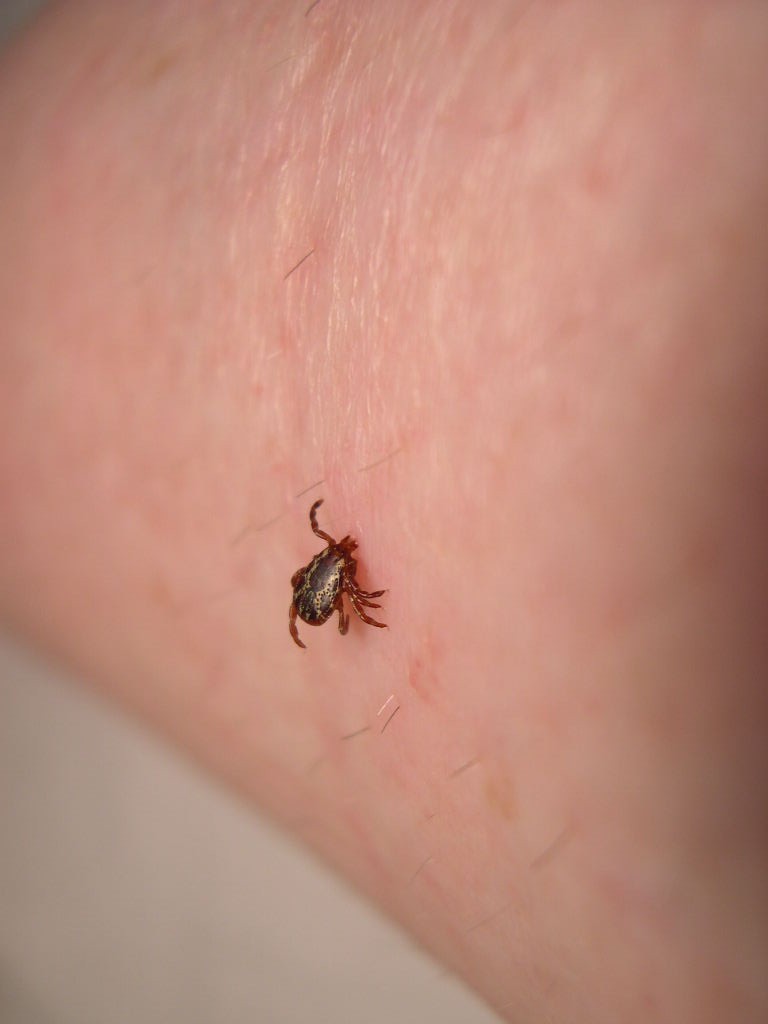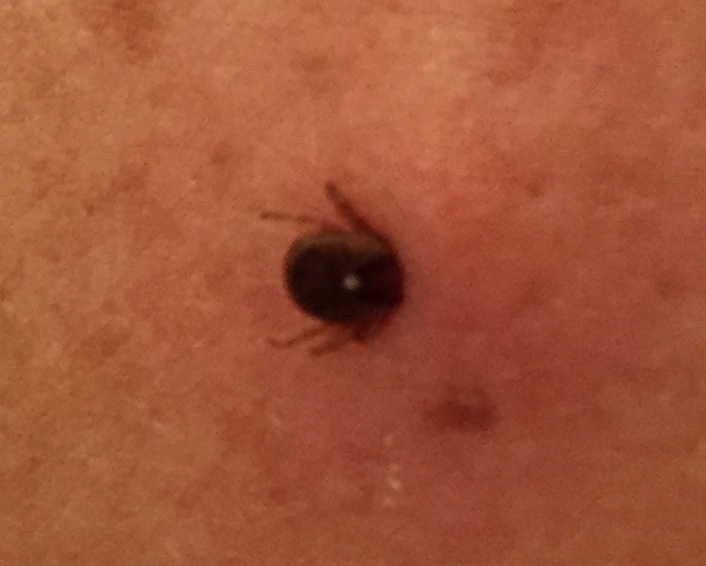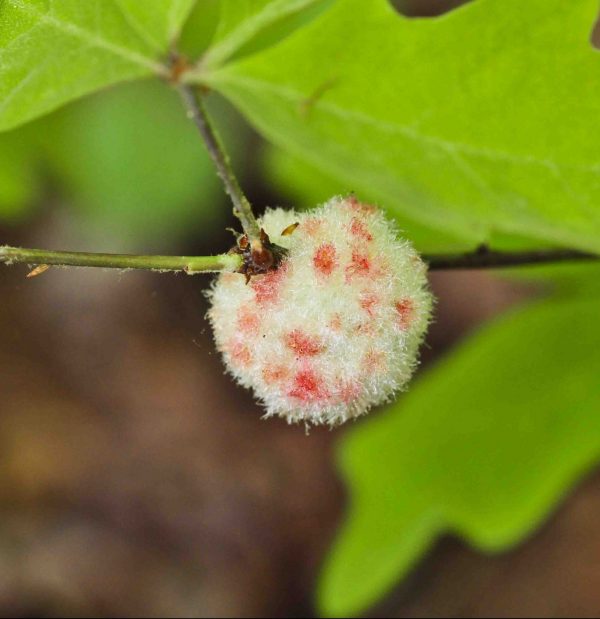Ticks – Identification and Control

Ticks engender a strong get-it-off-me response because they can suck a lot of your bodily fluid. Perhaps it is because deer tick (see below) bites have been associated with Rocky Mountain spotted fever, Lyme disease, and the new alpha-gal syndrome. In any case, ticks are common in all parts of Georgia each summer and it’s a good idea to keep their presence in mind when you come in from working or playing outdoors.
DOG TICK vs BROWN TICK The Lone Star tick (see below) is the most common tick found locally outdoors. They are easy to identify because the large white spot on their back is so easy to see with the naked eye. This tick feeds on several animals: gray squirrels, chipmunks, possums and even birds. For this reason, it is widely distributed in the out-of-doors.
The brown dog tick (see below) is half the size of the American dog tick – barely one-eighth inch long. It feeds on, and is found almost exclusively on dogs.
A blacklegged tick (see below) is much smaller than the other two and may sometimes be called a “seed tick”.
The Lone Star and black-legged tick might also be found if you live in an area that was once heavily wooded.
TICKLE CHECKS If your landscape has much shrubbery, tall grasses or wooded areas, you probably have ticks somewhere on your property. It is a good idea to conduct a regular “tickle check” each evening on yourself and your children after a day enjoying the outdoors. Pay special attention to the groin, armpits and behind the ears. If a tick is found, don’t immediately pull it off. Use a pair of tweezers to grasp the arachnid’s body and gently tug it free. You can then drop it on the floor and practice your tap dancing on its corpse. Clean the site with antiseptic and observe it for a few days as it heals. Contact a doctor if it becomes inflamed or develops a rash.
OUTDOOR CONTROL Ticks must feed on a host two or three times before becoming mature. When they are hungry, young ticks climb to the end of shrubbery branches or to the top of tall grass. A host, whether possum or person passing by, stimulates the tick to cling to their hair or clothing and crawl about looking for a place to enjoy a blood meal. The tick will wander, looking for a suitable place, for several hours.
If you own a dog or cat, inspect it every few days for ticks on the skin. Look particularly closely behind their ears and between their toes. A flea comb can also be used to comb out the ticks before they settle down to feed. Insecticides such as bifenthrin (click for examples) , deltamethrin (click for examples) , or esfenvalerate (click for examples) can be sprayed onto tick habitat. There is no advantage to spraying the entire yard; concentrate your efforts where the ticks are most likely to be found. Follow label directions.
DRESS LIKE A NERD Since the tick crawls for a time, the harder it is to find bare skin, the more chances there are for it to be brushed off. If you can wear long pants outdoors, tuck the pant legs into your socks, so the tick has to climb up the outside of your slacks. Tuck your shirt into your pants to further frustrate the tick from climbing even higher up your clothing. If you prefer to wear shorts and loose clothing, lightly spray your sock tops, waist band and shirt collar with an insect repellent containing DEET (click for examples).
MAKE A TICK DRAG If your children like to play in the yard but you are constantly finding ticks on them, try building a tick drag to capture ticks before they bite. Simply staple one edge of a four foot by three foot piece of white flannel (or light-colored towel) to a long wooden stick. Drag the cloth over your grass and along the edges of trails through the woods. The ticks will be stimulated to cling to the cloth, where they are easy to see, capture, and kill. If the drag is too much trouble, be sure to keep your grass mowed frequently and cut down any weedy areas. Prune back the low shrubbery that lines your woodland trails to ensure that walkers don’t brush against the limbs.
Mike, an avid outdoorsman, adds:
“I am an engineer, and I have many friends who are surveyors. The technique which they use to keep ticks off is a 50-50 mixture of baby powder and powdered sulfur (click for examples). I use it all the time here in Watkinsville, or in the mountains, and never get a tick on me when I use it. I just put it in an old baby powder container and then put it on my shoes, legs and pants and never have a problem. Before I started doing this, I would literally have ticks all over me when I would come in from hunting wild flowers in the woods.”
UGA publication: Protect Yourself From Ticks
Press Play below to hear the favorite song of outdoorsmen sung to outdoorswomen
“I’d Like to Check You For Ticks” by Brad Paisley
Deer tick
Lone Star tick
Dog tick
Black-legged tick




















